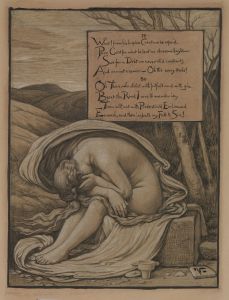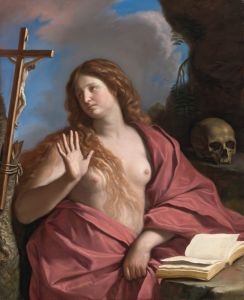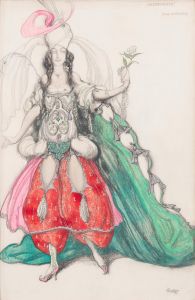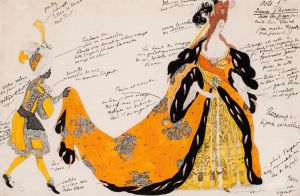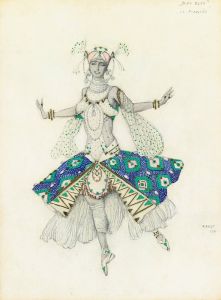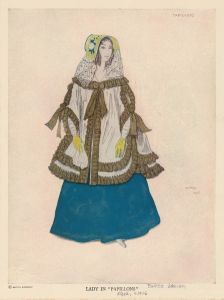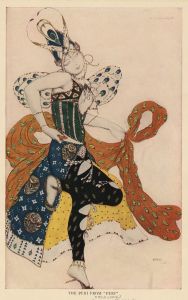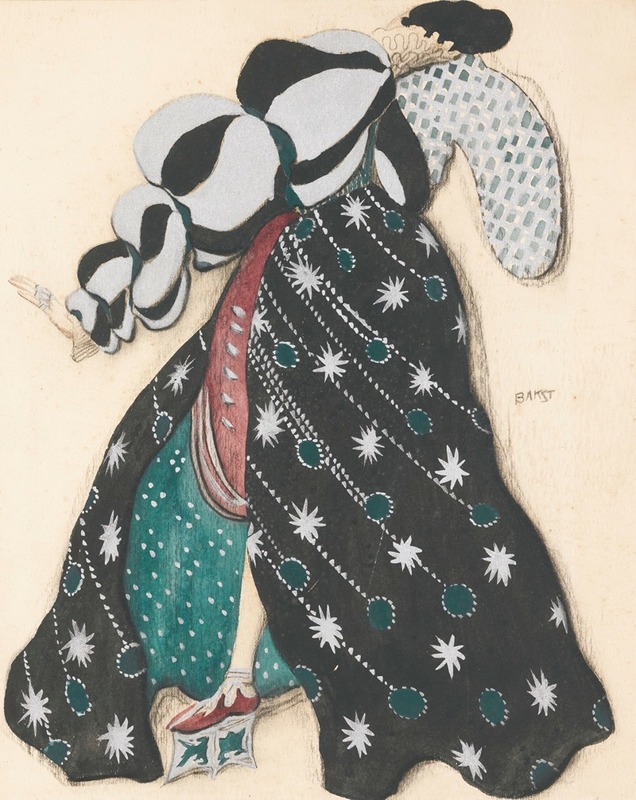
Costume Design For Potiphar’s Wife In The Legend Of Joseph
A hand-painted replica of Léon Bakst’s masterpiece Costume Design For Potiphar’s Wife In The Legend Of Joseph, meticulously crafted by professional artists to capture the true essence of the original. Each piece is created with museum-quality canvas and rare mineral pigments, carefully painted by experienced artists with delicate brushstrokes and rich, layered colors to perfectly recreate the texture of the original artwork. Unlike machine-printed reproductions, this hand-painted version brings the painting to life, infused with the artist’s emotions and skill in every stroke. Whether for personal collection or home decoration, it instantly elevates the artistic atmosphere of any space.
Léon Bakst, a prominent Russian artist and stage designer, created the costume design for Potiphar’s Wife in the ballet The Legend of Joseph (Josephslegende). This ballet, with music composed by Richard Strauss and a libretto by Hugo von Hofmannsthal and Harry Graf Kessler, premiered in 1914. It was commissioned by Sergei Diaghilev for his renowned Ballets Russes, a company celebrated for its innovative and collaborative approach to the performing arts.
Bakst’s design for Potiphar’s Wife reflects his signature style, characterized by vibrant colors, intricate patterns, and a fusion of historical and exotic influences. The costume captures the opulence and sensuality associated with the character, who plays a pivotal role in the biblical story of Joseph. Potiphar’s Wife is portrayed as a figure of seduction and power, and Bakst’s design emphasizes these traits through its luxurious fabrics, bold ornamentation, and dramatic silhouette.
The costume design is notable for its attention to detail and its ability to convey the character’s personality and narrative role. Bakst’s work often drew inspiration from a variety of cultural and artistic traditions, and this design is no exception. It incorporates elements reminiscent of ancient Egyptian and Middle Eastern aesthetics, aligning with the setting of the story while also showcasing Bakst’s imaginative interpretation.
The Legend of Joseph was staged during a period when the Ballets Russes was at the forefront of avant-garde art and performance. Bakst’s collaboration with Diaghilev and other artists of the company, including choreographer Michel Fokine, exemplifies the interdisciplinary approach that defined the Ballets Russes. The production was a synthesis of music, dance, and visual art, with Bakst’s costume and set designs playing a crucial role in creating the overall atmosphere and storytelling.
The original costume design for Potiphar’s Wife, like many of Bakst’s works, has been preserved and is studied as an example of early 20th-century theatrical design. It continues to be admired for its artistic merit and its contribution to the legacy of the Ballets Russes. Bakst’s designs not only enhanced the visual impact of the performances but also influenced fashion and decorative arts during that era.
This particular design remains a testament to Bakst’s ability to blend artistic creativity with the practical demands of stage performance, leaving a lasting impression on both audiences and the history of costume design.





